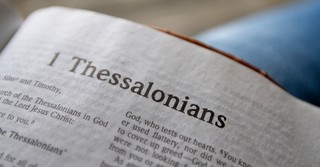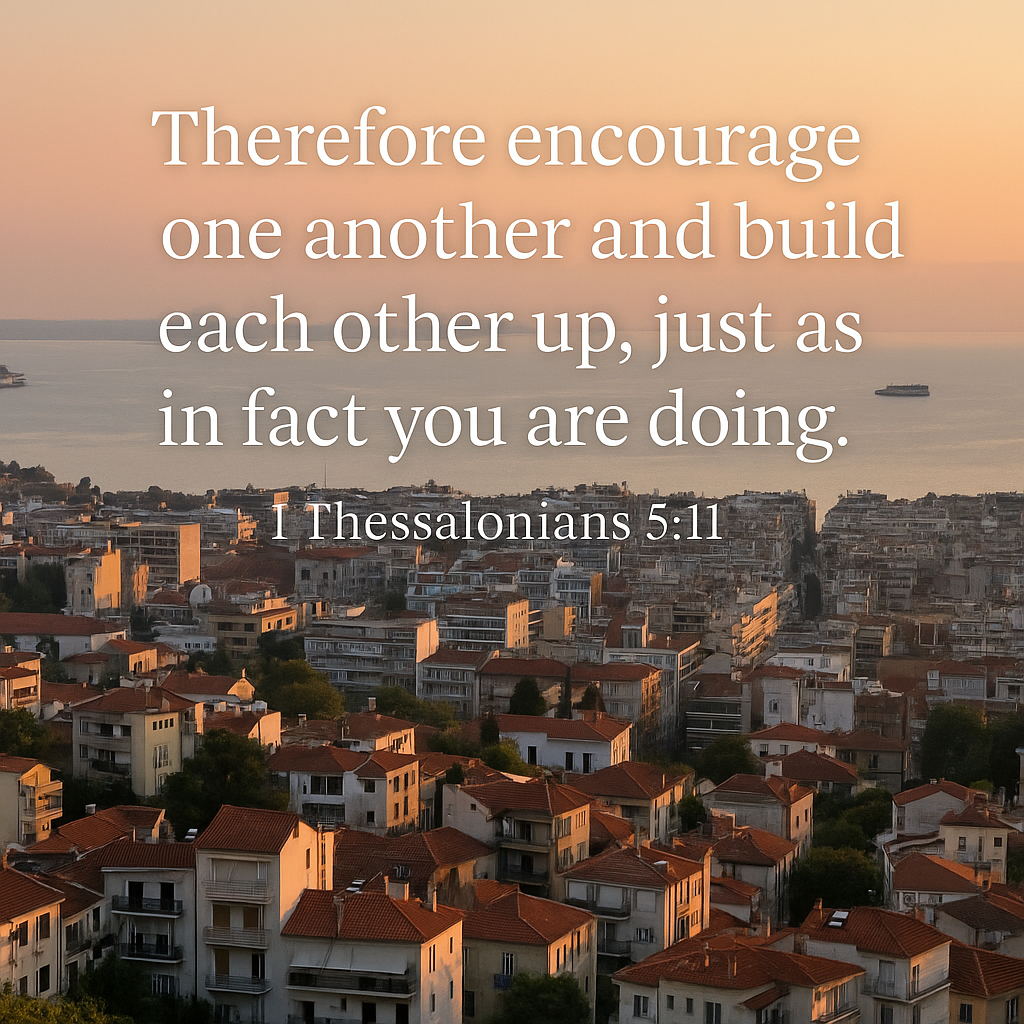What Is the Significance of Thessalonica in the Bible?
Share

The ancient Greek city of Thessalonica (also pronounced Thessaloniki) was once the capital of the Roman province of Macedonia. Its strategic location on the Aegean Sea and along the main highway connecting Rome to the East made it one of the most prosperous and vibrant cities in the region. In Christianity, Thessalonica was also a key stop in the missionary journeys of the apostle Paul, who later penned two letters (or epistles) to the church in that city. Those letters exist today as part of the Christian bible.
What Was the City of Thessalonica Known For?
In the New Testament, the book of Acts records that the apostle Paul and his companion Silas visited the city of Thessalonica on Paul’s second missionary journey (see Acts 16:1-18:22). At the time of Paul and Silas’ visit, Thessalonica was considered “the mother of all Macedonia.”
History tells us that Thessalonica was founded in 316 B.C. by the Macedonian general Cassander, who named the city after his wife Thessalonike, the daughter of Philip II of Macedon and sister of Alexander the Great. Some archeological evidence points to existing settlements in the region going back as far as the 5th century B.C. However, it is possible that General Cassander destroyed all previous settlements in his attempt to establish a new, unified Macedonian stronghold in Thessalonica.
Given its enviable position along the Aegean Sea, Thessalonica was quickly made the primary port of Macedonia and fortified accordingly to protect the city.
Almost a century and a half later, the Roman Empire besieged Thessalonica. Although Greek forces temporarily held back the Roman army, the city eventually fell to the Romans in 168 B.C., and by 148 B.C. Thessalonica had become the capital of the new Roman province of Macedonia.
With the 130 B.C. construction of the Via Egnatia, the main highway connecting Rome to the east, Thessalonica gained even more strategic value as the commercial, maritime, and military center of Macedonia. Even the Roman general Pompey recognized its significance, using Thessalonica as a home base in his war against Julius Caesar during the Roman civil war.
By the first century A.D., Thessalonica was still a prosperous city of the Roman Empire, with a population of nearly 200,000, which included many Jewish residents.
Today, Thessalonica survives under the shortened name Salonika.
What Happened in Thessalonica in the Bible?
On the apostle Paul’s second missionary journey (Acts 16:1-18:22), Paul and Silas traveled nearly 100 miles from Philippi via Amphipolis and Appolonia to Thessalonica to preach the gospel. Paul, like many, recognized the city’s strategic value as a central hub for transport and trade throughout Macedonia. A thriving church in Thessalonica would undoubtedly impact the entire region and could potentially serve as a home base for future ministries throughout Macedonia.
As was his custom upon arrival, Paul traveled to the local synagogue in Thessalonica to teach the local Jews about the good news of Jesus Christ (see Acts 17:1-2). The author of Acts records that many Jews, Hellenistic proselytes, and wealthy women responded to Paul’s message and came to faith in Christ (Acts 17:4).
Among those who came to Christ in Thessalonica were Jason (Acts 17:5), Secundus (Acts 20:4), Gaius (Acts 19:29), and Aristarchus (Acts 20:4), many of whom would go on to become close friends with Paul and accompany him on his later journeys.
We also learn that, in Thessalonica, Paul and Silas stayed with Jason while they primarily taught in the local synagogue. Unfortunately, Paul’s ministry in Thessalonica was relatively short-lived.
After only about three weeks, Paul’s ministry had grown. His presence and the spread of the gospel had stirred up many local Jews who wanted nothing to do with Paul or the gospel of Jesus Christ. Acts records that, “the Jews, becoming jealous and taking along some wicked men from the marketplace, formed a mob and set the city in an uproar.” (Acts 17:5)
The mob that had formed then attacked Jason and broke into his house in search of Paul and Silas. The Thessalonian believers, however, had successfully hidden Paul and Silas and helped smuggle them out of the city by the cover of night, taking them to the city of Berea, about 45 miles southeast of Thessalonica (Acts 17:10).
Unlike the Thessalonian Jews, who proved hostile to Paul and the closed off to the gospel, the Bereans were far more receptive to Paul’s message and supportive of his ministry. Of the Bereans, Luke famously wrote, “Now these were more noble-minded than those in Thessalonica, for they received the word with great eagerness, examining the Scriptures daily to see whether these things were so. Therefore many of them believed, along with a number of prominent Greek women and men.” (Acts 17:11-12)
Paul would remain in Berea to minister to the local believers. However, when the hard-hearted Jews of Thessalonica received word that Paul had escaped to Berea and was preaching the gospel there, the Bible tells us, “they came there as well, agitating and stirring up the crowds.” (Acts 17:13)
Once again, Paul was forced to flee, escaping Berea and boarding a ship for Athens (Acts 17:14-15). Silas and Timothy would remain, however, in Berea to strengthen and instruct the believers (Acts 17:14).
Why Did Paul Write 1 and 2 Thessalonians?
Although Paul’s time in Thessalonica may have been brief, his ministry to the believers in Thessalonica continued well beyond his initial visit.
As expected, after Paul and Silas fled Thessalonica, the remaining believers became subject to immense persecution at the hands of the local Jews who had previously targeted Paul. Despite their struggles, the Bible tells us that these believers held to the Word preached to them, remaining steadfast in their devotion to Christ.
Paul would later praise the Thessalonians for being an example to other believers and for the way the Word of the Lord “sounded forth” from Thessalonica through Macedonia and Achaia (1 Thessalonians 1:7-8).

Nevertheless, Paul was also lovingly concerned about the well-being of his fellow Christians in Thessalonica. In fact, he often longed to revisit Thessalonica. Satan, however, had always “hindered him” from returning to the city (1 Thessalonians 2:18).
Timothy would eventually rejoin Paul in Athens from where he was quickly dispatched to check in on the believers in Thessalonica (Acts 17:15-16).
Only after receiving a good report from Timothy while the two reconnected in Corinth (Acts 18:5) would Paul decide to write his first letter to the church in Thessalonica.
Relieved by Timothy’s report that the believers of Thessalonica had remained steadfast in their faith amidst persecution, Paul wrote primarily to commend the church and encourage them to continue to grow in their faith.
1 Thessalonians also contains several passages that promote and inspire hope for believers of all ages regarding the eternal glory that awaits those who in Christ at Christ’s inevitable return.
Only a few months after Paul wrote his first letter to the church at Thessalonica, Paul would again put pen to paper to address the believers there. New developments had likely prompted Paul’s second letter.
In any case, Paul needed a second letter to address several troubling issues that had made their way into the church of Thessalonica.
As reported, the Thessalonian believers were still facing persecution; however, several “false teachers” had also begun to proliferate the teaching that the “day of the Lord” and Christ’s promised return had already happened. As a result, many in Thessalonica were encouraged to give up their jobs and live relatively idle lives.
Paul, however, quickly challenged this erroneous teaching, recounting the events which must occur prior to Christ’s second coming (see 2 Thessalonians 2:1-12). Furthermore, Paul would encourage all believers to persevere under persecution and remain alert, laboring diligently for the sake of the gospel rather than succumbing to worry, idleness, or laziness (see 2 Thessalonians 3:6-10).
But again, Paul’s heart in writing to the church at Thessalonica on both occasions was to thank God for their witness, commend them for their faithfulness, encourage them to persevere under persecution, and instruct them to hold fast to the truth and the word preached to them, rejecting false teaching and any call to live idle lives in light of Christ’s inevitable return.
This is a teaching for believers of all ages, who are still encouraged, instructed, and edified by the legacy and ministry of the church at Thessalonica.
Additional Resources:
Book of 1 Thessalonians Summary
Book of 2 Thessalonians Summary
What Does it Mean to “Pray Without Ceasing” and is it Possible?
What Does it Mean that “The Dead in Christ Will Rise First”?
Why Will Jesus Comes “Like a Thief in the Night”?
Photo credit: ©Sparrowstock
